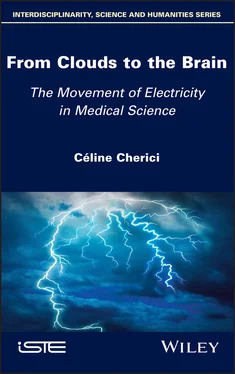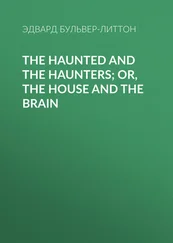5 Foreword
6 Introduction
7 Begin Reading
8 Conclusion
9 Appendix 1
10 Appendix 2
11 References
12 Index of Names
13 Index of Terms
14 End User License Agreement
1 v
2 iii
3 iv
4 vii
5 viii
6 ix
7 x
8 xi
9 xiii
10 xiv
11 xv
12 xvi
13 xvii
14 xviii
15 1
16 2
17 3
18 4
19 5
20 6
21 7
22 8
23 9
24 10
25 11
26 12
27 13
28 14
29 15
30 16
31 17
32 18
33 19
34 20
35 21
36 22
37 23
38 24
39 25
40 26
41 27
42 28
43 29
44 30
45 31
46 32
47 33
48 34
49 35
50 36
51 37
52 38
53 39
54 40
55 41
56 42
57 43
58 44
59 45
60 46
61 47
62 49
63 50
64 51
65 52
66 53
67 54
68 55
69 56
70 57
71 58
72 59
73 60
74 61
75 62
76 63
77 64
78 65
79 66
80 67
81 68
82 69
83 70
84 71
85 72
86 73
87 74
88 75
89 76
90 77
91 78
92 79
93 80
94 81
95 82
96 83
97 84
98 85
99 86
100 87
101 88
102 89
103 90
104 91
105 92
106 93
107 94
108 95
109 96
110 97
111 98
112 99
113 100
114 101
115 102
116 103
117 104
118 105
119 106
120 107
121 108
122 109
123 110
124 111
125 112
126 113
127 114
128 115
129 116
130 117
131 118
132 119
133 120
134 121
135 122
136 123
137 124
138 125
139 126
140 127
141 128
142 129
143 130
144 131
145 132
146 133
147 134
148 135
149 136
150 137
151 138
152 139
153 140
154 141
155 142
156 143
157 144
158 145
159 146
160 147
161 148
162 149
163 150
164 151
165 152
166 153
167 154
168 155
169 156
170 157
171 158
172 159
173 160
174 161
175 162
176 163
177 164
178 165
179 166
180 167
181 168
182 169
183 170
184 171
185 172
186 173
187 174
188 175
189 176
190 177
191 178
192 179
193 180
194 181
195 182
196 183
197 184
198 185
199 186
200 187
201 188
202 189
203 190
204 191
205 192
206 193
207 194
208 195
209 196
210 197
211 198
212 199
213 200
214 201
215 202
216 203
217 204
218 205
219 206
220 207
221 208
222 209
223 210
224 211
225 212
226 213
227 214
228 215
229 216
230 217
231 218
232 219
233 220
234 221
235 222
236 223
237 224
238 225
239 226
240 227
241 228
242 229
243 230
244 231
245 232
246 233
247 234
248 235
249 236
250 237
251 238
252 239
253 240
254 241
255 242
256 243
257 244
258 245
259 246
260 247
261 248
262 249
263 250
264 251
265 252
266 253
267 254
268 255
269 256
270 257
271 258
272 259
273 260
274 261
275 262
276 263
277 264
278 265
279 266
280 267
281 268
282 269
283 271
284 272
285 273
286 274
287 275
288 276
289 277
290 278
291 279
292 281
293 282
294 283
295 284
296 285
297 286
298 287
299 289
300 290
301 291
302 292
303 293
304 294
305 295
306 296
307 297
308 298
309 299
310 300
311 301
312 302
313 303
314 304
315 305
316 306
317 307
318 308
319 309
320 310
321 311
322 312
323 313
324 314
325 315
326 316
327 317
328 318
329 319
330 320
331 321
332 322
333 323
334 325
335 326
336 327
337 328
338 329
339 331
340 332
341 333
Series Editor
Jean-Claude Dupont
From Clouds to the Brain
The Movement of Electricity in Medical Science
Céline Cherici

First published 2020 in Great Britain and the United States by ISTE Ltd and John Wiley & Sons, Inc.
Apart from any fair dealing for the purposes of research or private study, or criticism or review, as permitted under the Copyright, Designs and Patents Act 1988, this publication may only be reproduced, stored or transmitted, in any form or by any means, with the prior permission in writing of the publishers, or in the case of reprographic reproduction in accordance with the terms and licenses issued by the CLA. Enquiries concerning reproduction outside these terms should be sent to the publishers at the undermentioned address:
ISTE Ltd
27-37 St George’s Road
London SW19 4EU
UK
www.iste.co.uk
John Wiley & Sons, Inc.
111 River Street
Hoboken, NJ 07030
USA
www.wiley.com
© ISTE Ltd 2020
The rights of Céline Cherici to be identified as the author of this work have been asserted by her in accordance with the Copyright, Designs and Patents Act 1988.
Library of Congress Control Number: 2020938719
British Library Cataloguing-in-Publication Data
A CIP record for this book is available from the British Library
ISBN 978-1-78630-595-4
Céline Cherici’s book explores the place of electricity in the history of medical science over a period ranging from the 18th to the 21st Centuries, from its discovery to the recent use of deep brain stimulation. Some contextual data helps us to grasp the full importance and scope of this undertaking.
The current importance of chemical and molecular representations, which have become consubstantial with biology, means it is easy that we forget that, from a historical point of view, it is physics that has constantly provided neurophysiology with explanatory models.
Galvani’s use of artificial electricity as a stimulant led him, by analogy, to conceive of muscle fibers as small Leyden jars. Thus, the mysterious nature of nervous fluid, which was therefore electric, a model which was vary different from the humoral model described by the Encyclopedists, was unraveled. The fruitfulness of the polemic between the proponents of metallic and animal electrics is well known in the history of physics, since the voltaic pile battery triggered the development of electrophysics, electromagnetism and electrochemistry, the development of which, in turn, went hand in hand with the invention of two instruments of considerable heuristic value in 19th Century Life Sciences: the galvanometer and the impolarizable electrode. These instruments led to the development of the great German electrophysiology, that is to say, the classical works of du Bois-Reymond, Helmholtz, Hermann, Bernstein, etc., which made it possible to propose various hypotheses on the nature of the action and rest currents. These currents were often considered to be the result of purely physical phenomena occurring in living tissue. In accordance with the dominant physical and technical models, nerve fiber was likened to a metal wire, a circuit, a magnet and, finally, a battery – a living battery the functioning of which physicists sought to understand by taking inspiration from the model of the electric battery. The origin of the battery’s electromotive force, how the nerve impulse was conducted and the changes produced in the fibers by this impulse were also investigated, leading to imported notions such as “polarized structures” or “local circuits”. In France, it was this tradition, that of the physical explanation of the functioning of living organisms, that was taken up by Louis Lapicque when he likened nerve fiber to a radio transmitter.
Читать дальше













